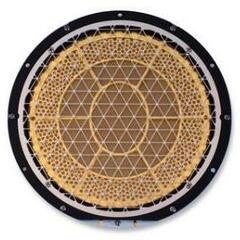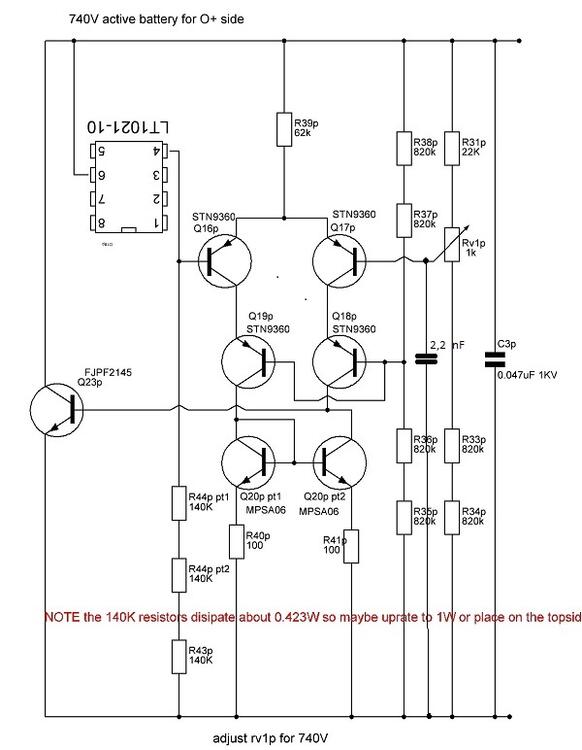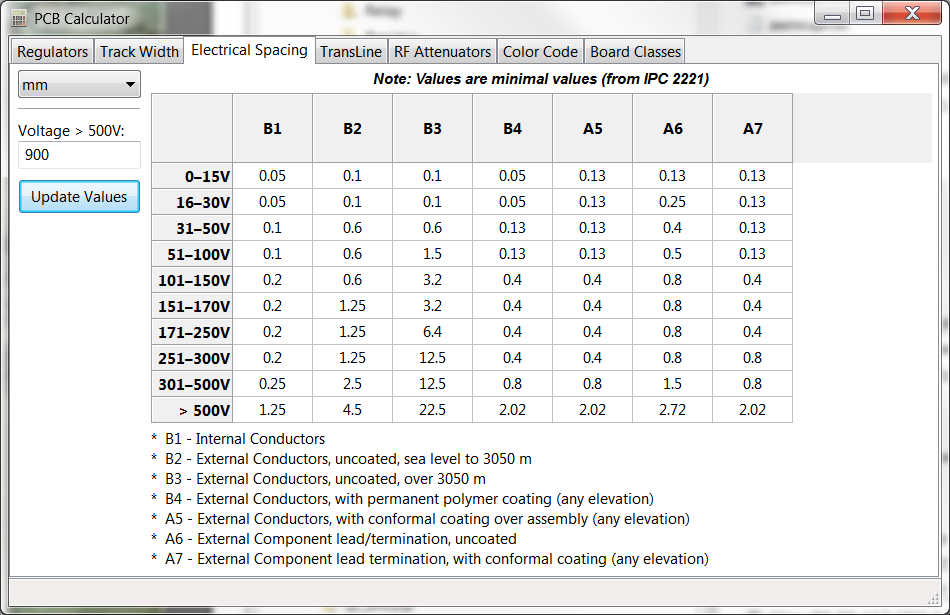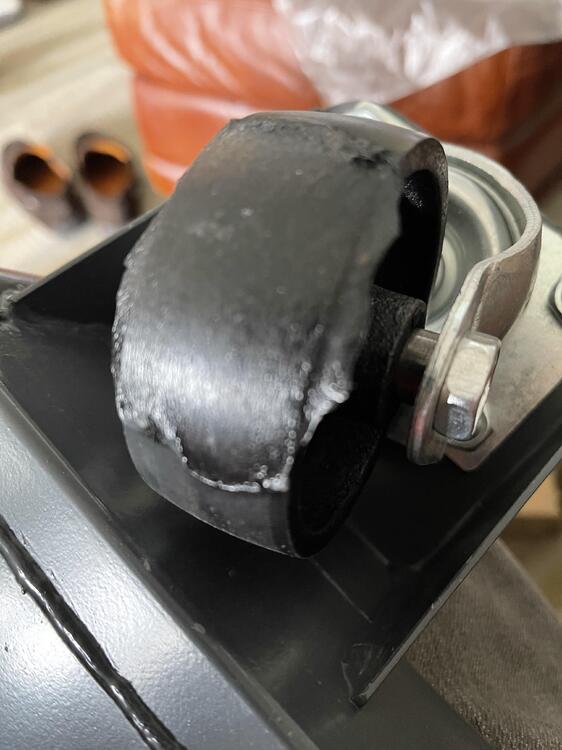Leaderboard
Popular Content
Showing content with the highest reputation on 09/27/2022 in Posts
-
6 points
-
4 points
-
3 points
-
I was Project Manager for an instrument on board this bad boy https://www.esa.int/Science_Exploration/Space_Science/BepiColombo The Mercury Imaging X-ray Spectrometer (MIXS). Due to get into Mercury polar orbit in 2025 after a 7 year journey. So far two flybys of Venus and two of the overall 6 flybys of Mercury as it brakes on its way in.3 points
-
Watch Live: NASA's DART mission on course to hit asteroid "head-on" | CBS News3 points
-
2 points
-
Ummm difficult.... They are all excellent musicians For his cheerful character, that of Yo Yo Ma. Casals, Rostropovich, Fournier (recorded in Basle Cathedral), Schiff, Bylsma and the Maisky´s first record, they all seem perfect to me in terms of virtuosity, although I wouldn't know which one to choose... perhaps Bylsma's version. On a technical level, I admit that I feel more attracted to "modern" recordings, so the Casals and Fournier recordings are the ones I listen to the least. Gavriel Lipkind and Queyras are perfect for me and on a technical level their recordings are simply spectacular (Queyras' version is recorded at the Eglise Saint-Cyriak and I think I remember that the engineer used DT990s). Both are very careful recordings and their presentation is extraordinary (it is worth the money it costs) Wispelwey I have always thought that it is the most correct "temporarily" since it uses a Baroque cello with "gut strings" (cuerdas de tripa, I don't know if the expression is correct) and I like to think that, if Bach ever got to hear his pieces, it would be with one of these instruments (perhaps I'm wrong). But the one I like the most and my first choice is Maisky's second recording. He is energetic and makes me feel very happy. It is very different from all... comparing his two recordings I feel like he evolved from an instrument virtuoso to a musician. I really like when something is recorded in cathedrals or churches... these places provide spectacular acoustics. Like allways, excuse my poor english and be soooo boring 😞2 points
-
^ Just be aware when you get to the third part. I had a hard time going to bed after watching it because I was so sad and angry. It is a lot to take in.2 points
-
2 points
-
2 points
-
2 points
-
I'm building a custom railing at one of my current projects. The posts and top caps will be White Oak, clear coated to match the floors. The pickets will be 1 1/2" round fir, and will be painted White. There will be no bottom rail, as the pickets will set directly into the floor. Hence the pattern piece that I made to use as a drilling guide. I'll use the same pattern to drill the bottom of the top cap. The pickets will be captured and glued. No screws or nails needed. The posts are set with fancy new newel post bolts. I will fill these holes with Whote Oak plugs, after I've got everything set into place. Just in case I need to adjust anything.2 points
-
This shit is just too retarded!! 😂 I for the record gave the entire 009 lineup another chance recently. Since they are so cheap now, for even like new used sets, I got a 009 and 009S... and they are still awful. This was actually one of the last 009's to be made and still sounds the same as my very early example. The 009S was also pretty new and yeah, still sounds the same sad mismatch of ideas. As for the X9000, it's not top of the line by any stretch of the imagination. Since I got a pretty much brand new SR-Omega for my birthday this summer I dragged out the X9000 for comparison and that lasted two songs... I couldn't get rid of the X9000 fast enough so it's back in the display case. Next comparison was SR-Omega vs. SR-007 nr. 35 of the production line... much closer but the 007 is easily better in every way.2 points
-
1 point
-
It's Joamat who is the brains behind the substitutions, not me. They seem to work fine though. I don't have a scope at hand so can't verify performance on any detailed level, but I'm listening to a T2 with tta/ttc004 replacements right now (no other modifications) and it does sound very good. Have some problems with a buzzing HV trafo that needs sorting, but the amp boards themselves seem stable so far.1 point
-
Knocking asteroids off course is amazing and I'm all about this technology, but I find it kind of crazy that knocking sperm off course is controversial?1 point
-
Also not real, but again I wish it was Kind of in a similar vein. In the Chaplin silent movie The Gold Rush, he eats his shoe. That was in fact liquorice. Apparently sourced from a UK company who made the stuff, and made the shoes that Chaplin ate. Enough of them for several takes.1 point
-
I'm on complete Jonathan Richman kick and wish to submit the Andrew Bird interplay.1 point
-
The U.S. and the Holocaust This is very good, despite the difficulty of the subject matter. History will never forget the crimes the German butchers perpetuated against the Jews, the Poles, and the peoples of Eastern Europe. What was less well known to me was the story of how things went down over here. A lot of us already know about the bigotry of folks like Henry Ford and Charles Lindbergh and his “America First” party (sound familiar?). What I did not know about was the behavior of our state department, of the immigration quotas and the pervasiveness of the anti-immigrant and anti-semite crowd. I don’t think these were all necessarily bad people so much as people who could have done way more, yet did not. They were on the wrong side of history. The stories of the survivors, as always, are the most heartbreaking of all. I’ve never understood anti-semitism beyond the fact that Jewish people usually lean to the left politically and hold themselves out as unapologetically different. It didn’t make sense back then and it doesn’t make any more sense now. Streamable on PBS here: https://www.pbs.org/kenburns/us-and-the-holocaust/1 point
-
1 point
-
Seems to work. The red LED turns off and on correctly. Red light means everything is OK – off means something is bad. A green LED might be more appropriate. The short uninsulated wires, one each side, is not to correct a mistake. It was the only way I find to get it working. The board has 19 vias. I did one mistake though. I gave the mosfet driving the relay a wrong footprint, but fortunately it was possible improvise… now it works as it should. I’m waiting for the relay. Omron G6S-2G – surface mounted, good for 2 A.1 point
-
So, as my soap opera story with the X9000 is coming to a close (for now), I have to correct a few things after I visited a friend yesterday. Originally, I wanted to hear it on analog, but due to a technical glitch it wasn't possible, I forgot that the Carbon only has XLR, I assume an XLR-RCA plug converter would have worked, but we didn't have one. Anyways, in some ways this was better, as I could listen to various recordings that I am more familiar with (and get annoyed by how much better they sounded compared to home). The test setup was the Linn Klimax Renew DS with the KGSSHV Carbon (also a cheap IC that might not completely suit the X9000, but the source did that, so it was fair). The experience with this DAC is much different. Now the Carbon can flex its muscles, the sound has also levelled up compared to the standard KGSSHV I carried last time, that was something that we agreed on. Before at home, when I pushed the volume to bring up the bass, it became strident and unpleasant. Remained clean this way. While at the start, I liked the 007 Mk1 most of the time, as we switched back and forth, my bias toward the old Stax house sound started to lessen, and I tended to gravitate more towards the X9000 on occasions, and appreciate more of what it was doing. It also took no prisoners in revealing what it's old nemesis is doing wrong, there is definitely a fair amount of leeway still to tweak the sound of that to a more optimal level, but it is always going to be more towards "romantic, sculpted", rather than "modern, engineered". These two headphones do seem to work quite well as a combination, because it's basically an either-or situation. Either the X9000 still sounded a bit bright, dry and analytical and just generally revealed things about certain recordings that weren't great. Or, even though it was possibly best the 007 Mk1 sound I heard, it was still too warm - coloured towards slightly V-shaped - soft and slow, particularly in the bass. The X9000 bass is much higher level, far ahead with regards to detail, if a bit too little at times. To be fair, most of the time I would have lowered the volume on the 007 to reduce the bass-heavy character with the Carbon, which made it a little tiresome this way. Simply enjoyable to listen to, if one gets used to it and stops analyzing - and if it is a question of which one to choose, it does give a much higher budget to the rest of the chain. There is a particular difference with male vocals, which sounded more accurate on the X9000. With female vocals, differences were still there, but seemed less exaggerated. The textures of each instrument are rendered incredibly on the X9000 with much higher dynamics, although in same cases, the more compressed 007 MK1 did seem to keep the music altogether better with more of that meaty fullness the 007 was designed for. One particular oddity about the X9000 that did not seem to change from what I had observed the first time, is that for me, it is weird to have a brighter sound but with high frequencies that are a bit subdued with too little sense of attack and decay. While the treble isn't perfect on the 007, it seemed to render much better. As soon as the music had "no treble", the X9000 instantly sounded way more impressive. Would they tweak this in the next evolution and potentially take a step backwards with regards to sheer resolution? I have my doubts. I might actually revisit the 009 at some point, maybe if I loose the rest of my sanity to trade up for a T2, which from my understanding is a little warmer than the more neutral Carbon. Obviously even brighter than the X9000, but I don't recall this problem, could be be a decent headphone to build upon that is not valued highly on the used market. I am personally not a big fan of this X9000 and 009 character in that I have to have a really solid, well-tweaked chain (maybe go full analog even), otherwise they just bother me. I can still scale back to the DA11+727 mod+007 Mk1 and enjoy a reasonably decent (highly compressed, muddied up, smaller scale) sound that is mostly free of brightness (rounding off the V-shape a bit). But on the other hand, they do incentivize tweaks chain that may take away a big amount of time and energy, but they can be also improve other headphones. I could have carried quite a few other headphones that would have sounded really great on this chain - will do this on the next occasion for sure. It was more of a question of comparing two headphones that sound great in different ways, rather than one being better than the other. So in the end, no matter what headphone you try to voice an opinion, you need to see it from all angles, which was part of my overly hostile attitude towards the X9000. On this occasion, I didn't listen to rock music, which I think is where it's just not the best at. The massive variability regarding the chain adds complications, but I just fail to sense that in most cases. I was just randomly sleuthing for opinions about the Qualia which I feel has arguably more interesting treble rendering with even more exaggerated, explosive dynamics than the X9000, but more pressing issues elsewhere), and I found this from Asr, whom I always enjoyed reading, basically why I bother writing these in the first place: "Er, I wouldn't call my SR-009 review "scathing" and if that's how you took it, then I clearly have to explain further. Most of the reviews I write are attempts at balanced counter-opinions (because nothing is perfect—I operate from the assumption that just about everything is subjectively flawed in some way), while "scathing" for me would be more like my review of the HiFiMan HE-400 where I had very few positive things to say about it. The SR-009 is a very good headphone by any consideration, and I was comparing it to the OII MKI, which for me was the closest ever that got to sonic perfection (but still missed the 100% mark in some key areas). If I'd compared the SR-009 to something like the HD800 on the GS-X, the review would've reflected way more positively in its favor." Then I also looked up some more and found this: "If you play an instrument (from the orchestra, that is), I think you'd find that the SR-007 would convey a much more natural & realistic tonality than the SR-009. I typically find that people who don't play an instrument but listen to classical music seem to prefer headphones like the SR-009, and other similar ones like the HD800, for their soundstaging (which isn't unsurprising, as they both do a credible job of reproducing "concert hall"-like imaging). So it depends on what you want from your listening of classical music—accurate tonality, or the concert hall soundstage? In contrast to the SR-009's concert hall, the SR-007 puts you on the stage with the orchestra, and pretty much right at the conductor's position. And of course, to get the most benefit from the SR-007 you need to pair it with the HeadAmp BHSE and a really good source component. The BHSE is overkill for the SR-009 though." This one I am not sure if I can agree with, since the 009 may need a different source than what the 007 may be happiest on and I feel like every Stax likes power. For instance, one could have a Carbon as the middle element, and then try to vary the other two things in tandem with each other. I was listening some classical tracks I auditioned with the HE90/HEV90 in 2016 and before that, an audio engineer gave me some explanations about how it "should" sound - which unfortunately I forgot a long time ago, but I do have some recollection about that sound as I continued using these tracks for evaluation. While the 007 had much more of that "vintage-like" resemblance to that sound than the X9000, compared to how I remember the HE90, it was heavier in the bass, less forward (more coloured in general) and even when supported by the Carbon, it was still a bit soft and not as dynamic. Once again, this is where the X9000 might have the lead over the HE90 - but again. that wasn't necessarily driven by amp that realises its full potential. In any case, on these "budgetary" Staxes, the music itself still sounded really excellent at the very least. Happy listening!1 point
-
1 point
-
Please let me know where I can locally pick up one of these Shop Foxes.1 point
-
Yea and they often use such a capacitor to decrease output impedance at high frequencies if a voltage divider uses high resistance and it forms RC chain with control transistor's capacitance: C3 in this scheme for example. 1. I thought about the stability, but we don't see any instability or generation during the measurements. 2. Currently the impedance of the AB is not flat at all. In my measurements it increases almost twice from 100 HZ to 1 kHZ. But I understand your point, thanks. I will try to simulate or even measure a phase shift too. 3. I will make a simulation after insuring that all the component in my library has proper models including parasitic capacitances. Do you have spice models for transistors? But the final check is always a measurement 🙂 . I will probably also change the test circuit by changing the R5 resistor with 2SK216 transistor and modulating it by AC signal. Why does the operating current matters here ? We always feed the battery by the same 5mA current.1 point
-
1 point
-
Thank you! The idea is also not mine, but my friend's. Oh, I didn't know this. Anyway this is great work, that made my labor much easier. Thanks! Now I am building 2 amps: 1. The original T2 with as less changes as possible. 2. The possibly better version of T2. In this version all the upgrades would be made not to use modern parts where it is possible but only to improve the amp. For example STN9360 is better in many places than old and rare 2SA1486 and vice-versa for the FJPF2145 and 2SC3675 pair. And this amp is based on the scheme that you posted here. Thank you very much for that. And of course thanks to all the authors of ideas! Dmitry used the PTFE cap only because we have only 0.001 uF(too small) and 0.047 uF(too much IMHO) PP caps, and to make a funny photo where the cap's size is comparable with the whole board 🙂 . I am sure that 3000-4000 pF x 1000V mica or polypropylene caps would be also good here. They are cheap and small enough even to upgrade the original T2 amps using daughter boards. For the old-style battery I would increase its value even more due to higher input capacitance of 2SA1486. But of course, before suggesting it to anyone I need to check this update in my amp or ask someone to check it in his T2. Just in case, I've attached the updated scheme of AB with the cap 🙂. This sounds nice and I would like to contribute to this project 🙂 . But I thought that Joamat collected all his thought and updates in mini-T2. Am I wrong ?1 point
-
Nice work, its always good to see progress and new ideas for the T2. Just to clarify. I did not design the mostly modern T2 or its battery. I simply created a series of posts on my build and posted my modified gerbers and updated and clarified schematics. I have been trying to collate the information scattered over years and years of posts into one or two long posts to provide a detailed starting point for new builders. I would not want to take credit away from the people who actually did the hard work of designing and testing. Your battery looks promising. If I could suggest, PTFE caps of sufficient voltage are quite large and not easily available new. I think it would be possible to find a place on the amp pcb for 1KV film caps e.g. wima. I would also be interested in the effect on the existing mostly modern T2 battery if just the cap is fitted - since such a modification would be very cost effective for existing mostly modern T2s. If the cap mod is shown to be stable and reliable I would be happy to update my existing post to include it in the schematic as a option and update the gerbers to make a place for adding the cap. regards James P.S independently of your effort MLA and I think Joamat have been working on a variant of the mostly modern T2 amp board that replaces the unavailable new 79 and 216 transistors with tta004 and ttc004, which if they prove stable, could result in a T2 only using current production components. (the pinout of the tta/ttc is different to the originals but they have not so far had to make any other changes).1 point
-
A short table with results: It seems that active battery without the capacitor increases amplitude of signal at the base of Q26 with frequency, especially the original battery. Has it been done intentionally? I just can't see a reason. This imperfection of AB probably decreases stability at HF and slightly lowers bass. Measurements have been made with Tektronix THS720 and P5102 voltage probe. I can't wait to measure these batteries in the amp itself1 point
-
The new battery with added capacitor: 1. 120 Hz, power off http://ixbt.photo/photo/406668/17916TMfujOMyVu/Hgj7GE8yHX/1514671.jpg Amplitude is about 200 mV 2. 120 Hz, power on http://ixbt.photo/photo/406668/17916TMfujOMyVu/Hgj7GE8yHX/1514672.jpg Amplitude is about 20 mV (!) __________________________________________________________________________________________ 3. 1000 Hz, power off http://ixbt.photo/photo/406668/17916TMfujOMyVu/Hgj7GE8yHX/1514667.jpg Amplitude is about 200 mV 4. 1000 Hz, power on http://ixbt.photo/photo/406668/17916TMfujOMyVu/Hgj7GE8yHX/1514668.jpg Amplitude is about 10 mV or less (!!) __________________________________________________________________________________________ 5. 10 kHz, power off http://ixbt.photo/photo/406668/17916TMfujOMyVu/Hgj7GE8yHX/1514673.jpg Amplitude is about 100 mV 6. 10kHz, power on http://ixbt.photo/photo/406668/17916TMfujOMyVu/Hgj7GE8yHX/1514674.jpg Amplitude is about zero (!!) __________________________________________________________________________________________ Adding the bypass capacitor makes the active battery much closer to an ideal "voltage drop" element. I think that increasing the capacitance to 4000 or 5000 pf will decrease the measured voltage even in the case of low frequencies like 100hz.1 point
-
40th is fine for our use unless we go to 600V or higher. We learned this the hard way back in the KGSSHV days.1 point
-
I came across IPC2221A years ago when I started to make my own uncoated home-made boards falling in category B2. Following the document would have had a huge impact on my layouts. But as a DIY:er I’m entitled to do whatever I like so I went with a clearance of 40th as standard with ground plane both sides. So far, I haven’t noticed any problem due to the clearance.1 point
-
I stumbled across the Electrical Spacing section of the PCB calculator in KiCAD, which is from IPC2221A, Generic Standard on Printed Board Design. According to IPC2221A, most of our high voltage e-stat amp PCB build will fall into the B4 and A6 case. It looks like we may have a problem with the clearance. The biggest problem is with the IXCP10M90S footprint, where the conductor-conductor spacing is only 0.5mm. The SiC FET footprint is better at 1.7mm. Some minor problems here and there where the spacing between B- and other nets are about 0.5mm. I don't think anyone is conformal-coating the board after assembly. So in order to be fully compliant, especially for the (semi) commercial builders, it would be better to revise the PCB.1 point
-
You could use something like this Rounded Socket Button Head Mount it from the bottom with the nut on top. Not sure I would go to deep on the inset. Not more than 1mm.1 point
-
I love the bm869s "it just works" (tm) is well built and just inspires confidence, has good accuracy and good resolution - especially on dc volts, has great input protection and a micro amp range. Its a great set of features for not crazy money. Many compare it to Flukes - which are double to triple the price. Ok, nit picking is in my DNA: it does not come with a case and the included probes are only okish and maybe the back light could stay on longer but otherwise its really nice. pc sound card into stax amp input works fine. I do this myself - its actually lower distortion and noise than most signal generators (many low cost arbitrary digital signal gens are more interested in high frequency in the 10s of Mhz rather than low noise and distortion in the audio range and are often only 12 bits of resolution - bellow compact disk resolution). The only things to bare in mind is the limited bandwidth of pc sound. Many soundcards have a capacitor in the output so the output will be down by multiple DBs at low frequencies ( 5 to 10hz) whereas many of Kevins Stax amps have no coupling caps and have a very extended low frequency response. Also at the upper end even a 192Khz sample rate sound card will probably have little output above 50khz-70khz. But for basic functionality testing it should be fine. A second hand old school analog signal gen might also be an option if you are on a budget and don't need the features of all digital gen. Windows can and often will re-sample the sound adding more noise and distortion so ideally you need asio drivers which can bypass most of the windows sound system including the windows sound mixer and deliver a far more pure output. if you pc has a digital output you can do digital output to external dac which can result in even lower noise and better distortion and sometimes better bandwidth (depending on if the dac has coupling caps and how it implement high frequency filtering). I also do this. personally I find arbitrary wave forms a gimmick - you cant analyse crazy wiggly waveforms and the software for making them is often primitive and basically you "draw" the waveform with a mouse and end up with something not really meaningful for audio. About the only time I used awg in audio was I created a symmetric wave so I could check absolute polarity and because of the asymmetry it effectively had busts of dc and so you could see the effect of the coupling caps reacting to the sudden changes in dc conditions. The ability to do a sine wave sweep is useful - for quickly getting a visual feel for frequency response on a scope and detecting peaks and trough's. Same with square wave sweep for quick look at instability vs frequency and triangle sweep for determining clipping vs frequency. (glad to help - my way of contributing to the community. In return I hope the community does not flame me if I express something they don't agree with 🙂 ) personally if you have no test equipment I would say in order of priority 1. good reliable robust multimeter with a good selection of probes, hooks etc and preferably a temperature probe input and K type thermal couple. For checking temps are sensible, searching for shorted and therefore overheated components, checking components are running within thermal spec, checking transistors are properly bolted down to heatsinks etc etc. 2. audio signal generator and scope (one is not much use without the other in my opinion) if you plan to do quite a few builds/start to get serious: 3. variac for slowly starting up new builds in a controlled way 4. semi conductor analyser - useful for checking for fakes, checking for failed transistors, matching small signal transistors. e.g. peak dca75 5. LCR meter 6. high voltage transistor breakdown tester - for testing fake transistors, diode breakdown and high voltage zeners one possibility is the dy294 although in stock form the clips are crap. I modified mine to have flying leads with good quality clips on the ends. The manual is also pretty bad. (common theme with cheap Chinese stuff but it does work and I have found it useful e.g. measuring and matching the output of high voltage (75V+) zeners. 7. capacitor leakage tester if you take electrical safety importantly and have separate power supplies from the amps 8. high voltage insulation tester for testing the wiring chord and connector between psu and amp 9. pat tester for testing primary winding of psu transformer, chassis safety earth etc if you plan to do lots of surface mount sense peak do a set of probes which are self standing and have very fine spring loaded tips. great of looking at individual pins on opamps etc. https://telonic.co.uk/product/4018-sensepeek-pcbite-kit-with-2x-100mhz-and-4x-sp10-probes/ and can be connected to mutimeters, scopes etc. real luxuries because you are taking things too seriously: ability to measure distortion and noise e.g. keithley 2015 x10 x100 differential scope probe more multimeters dim blulb tester (arguably as important or more important as a variac) if you are dealing with a known bad or unknown condition amp NOTE this list does not cover tools for building/repairing amps... only for testing/troubleshooting. I'm sure other headcase members can add to this list and include their own favourites. (I will not recommend anything I have not owned and used multiple times myself.)1 point
-
KSA-5 design is not particularly demanding on transistors, as lots of local feedback (aka degeneration) and the low impedances tend to even things out. Pretty much anything with the correct pinout (base in the middle, unless you want to carefully bend them) and with the rated Vce of 45V or higher should work fine. It might make sense to match the paralleled and differential-pair transistors, but even that is just gilding the lily.1 point
-
0 points




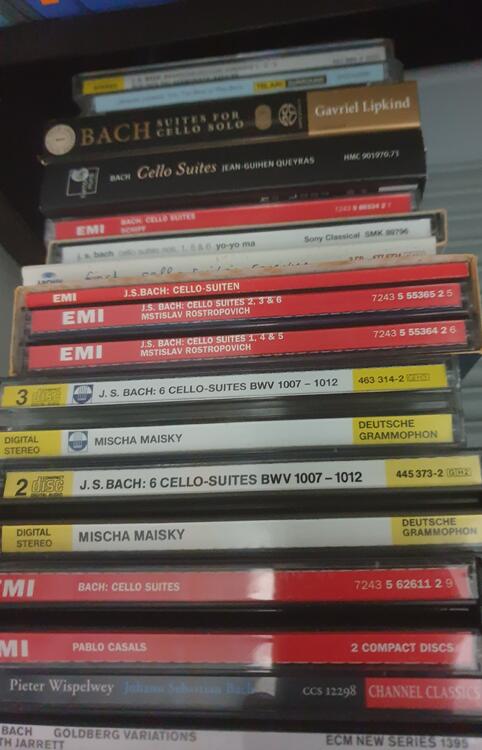
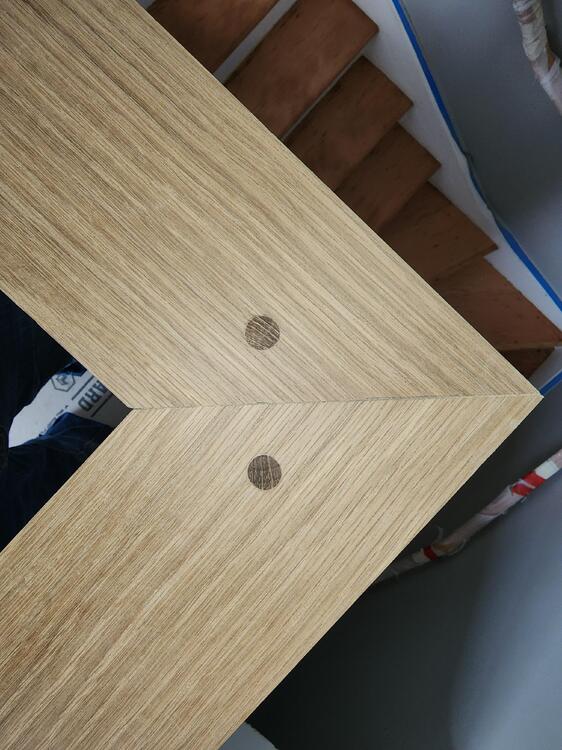
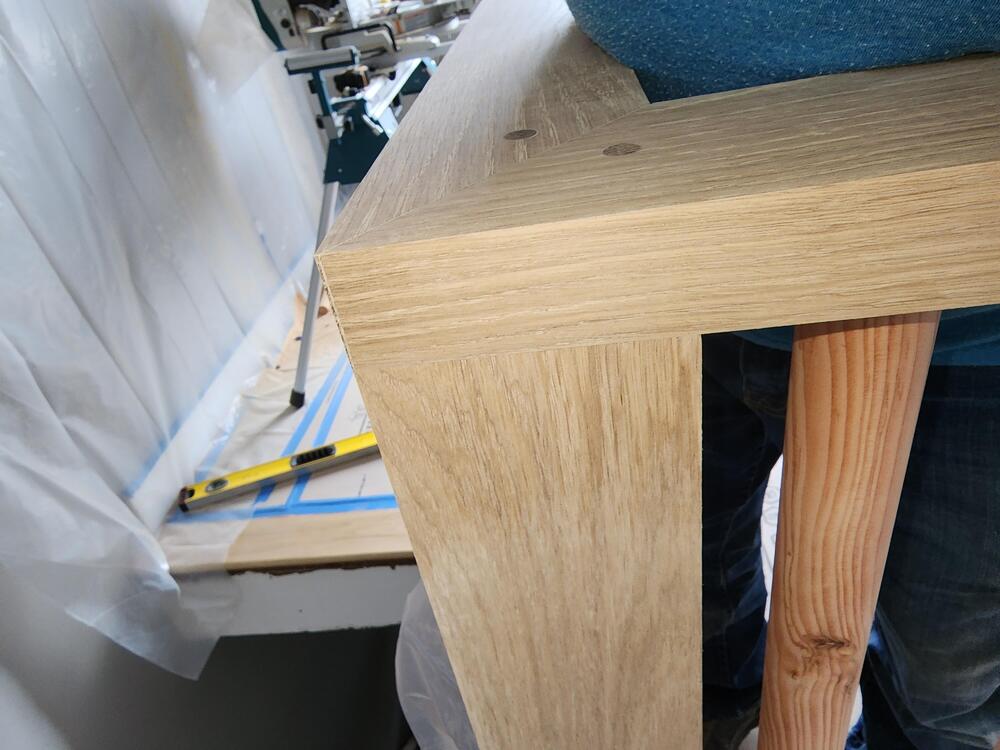
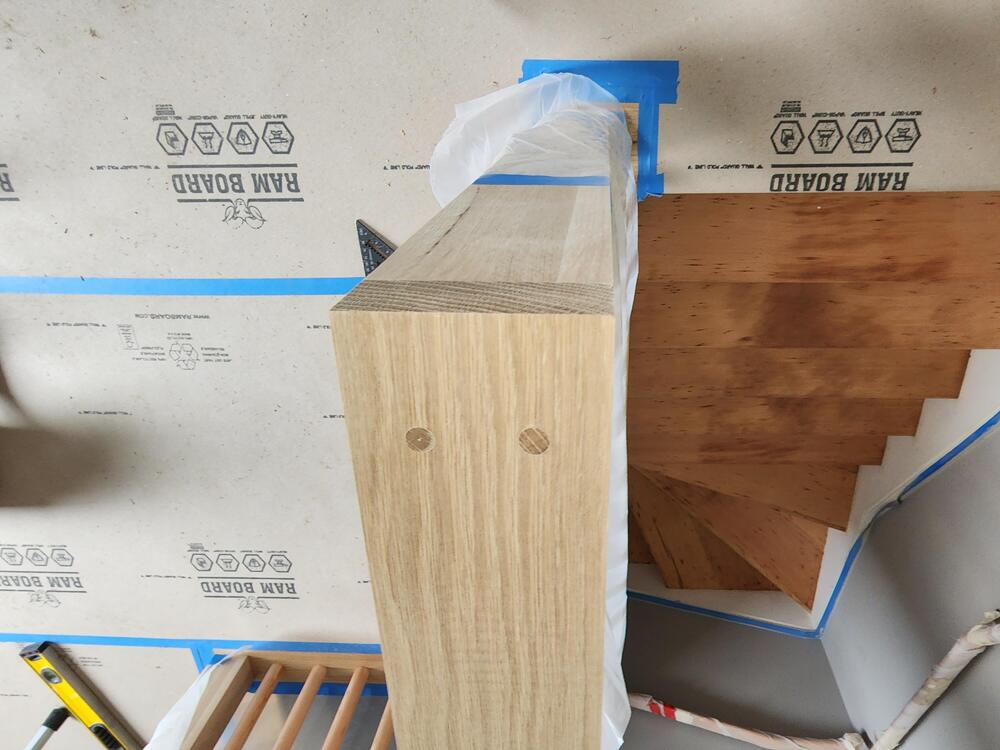
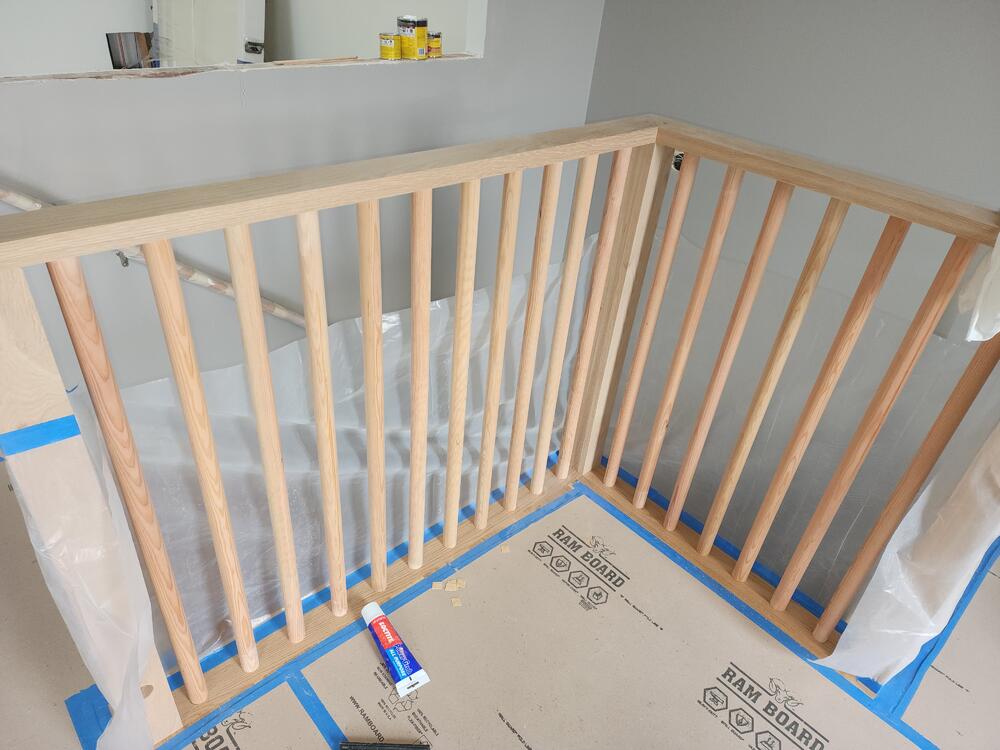
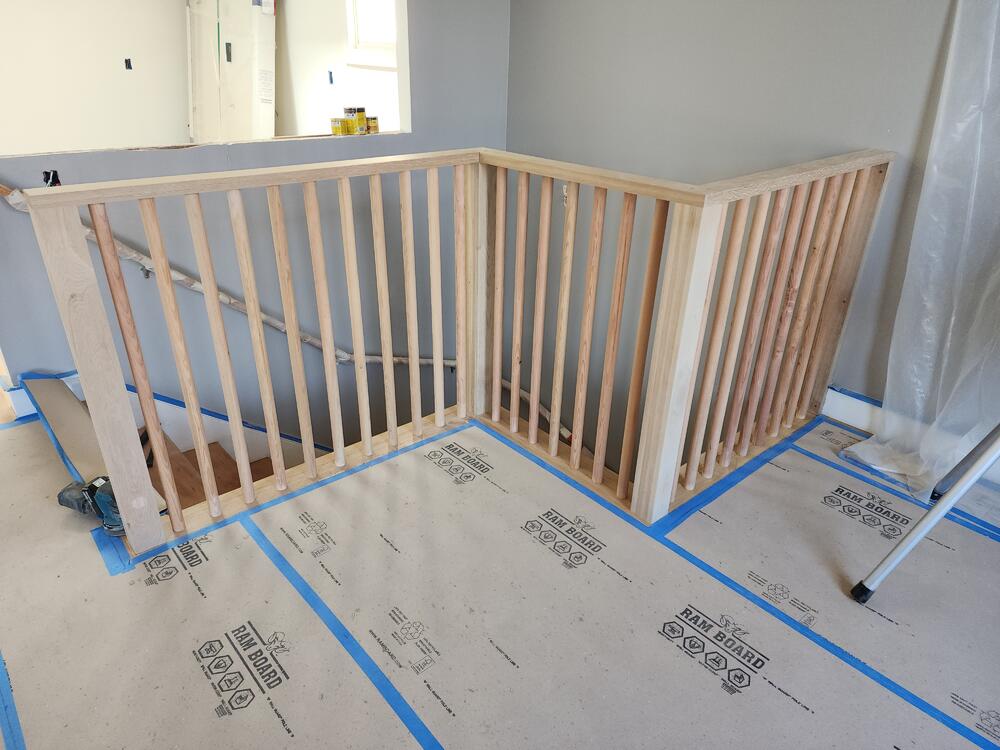

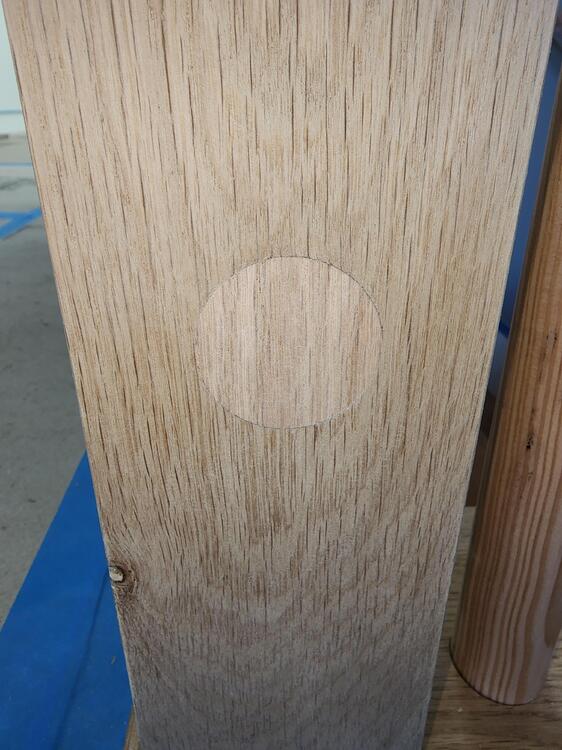

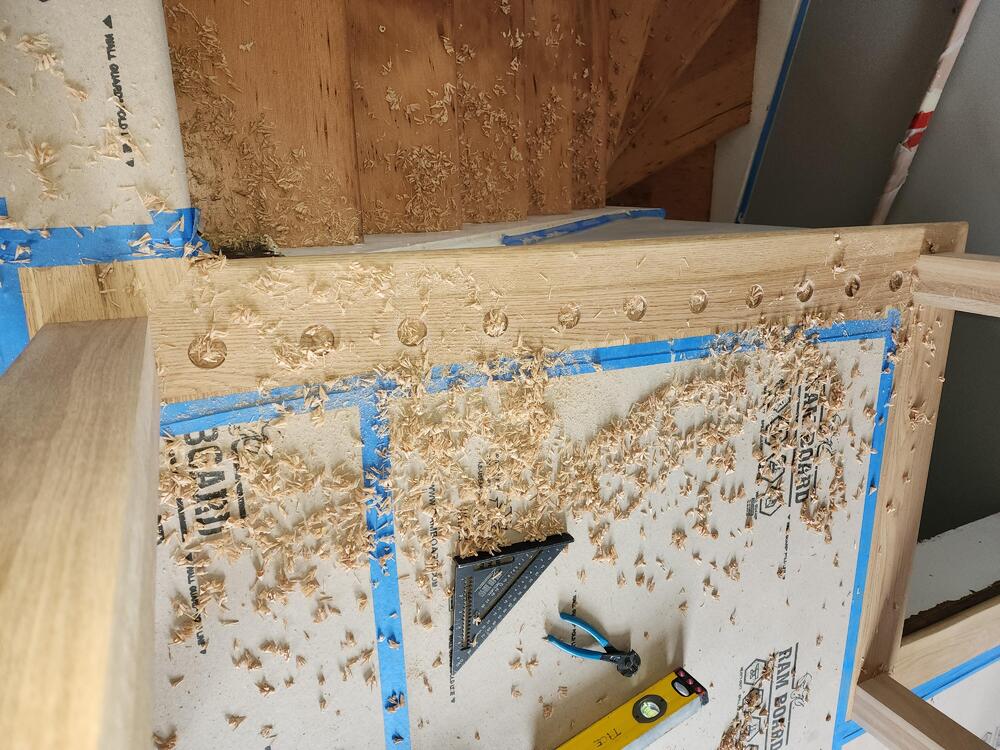
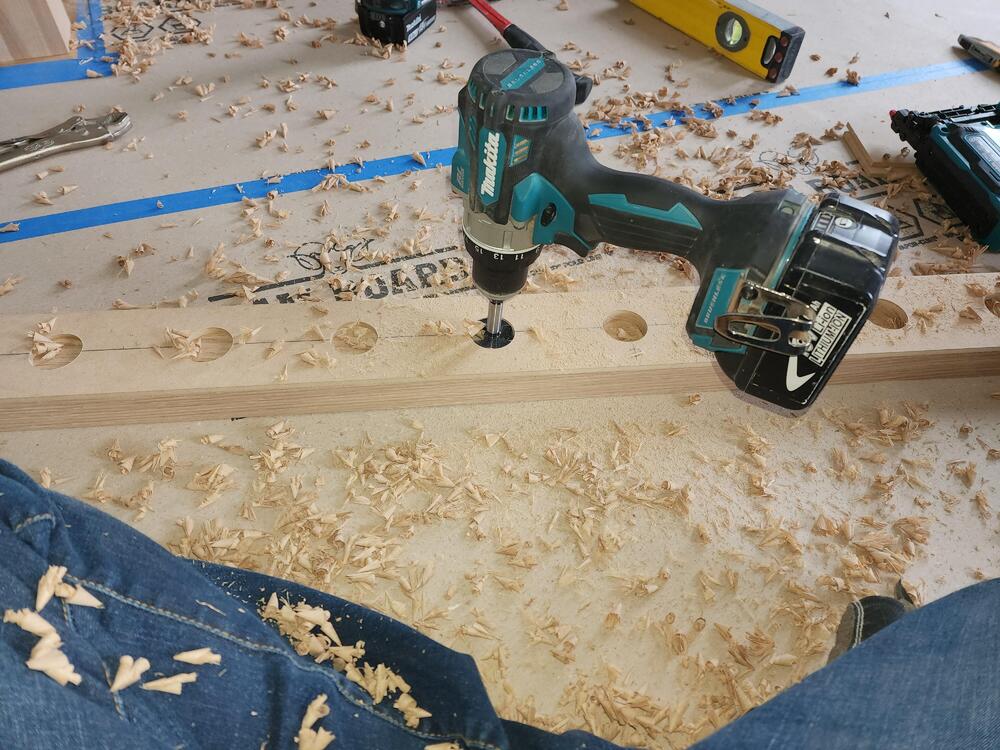
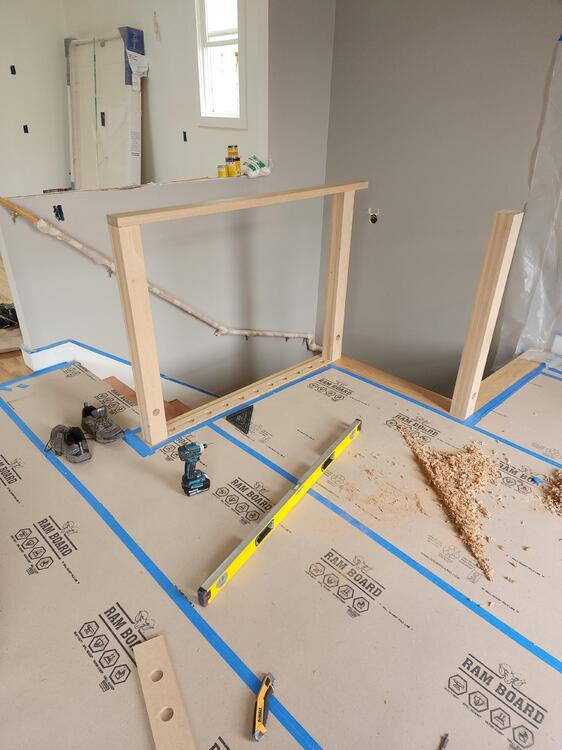
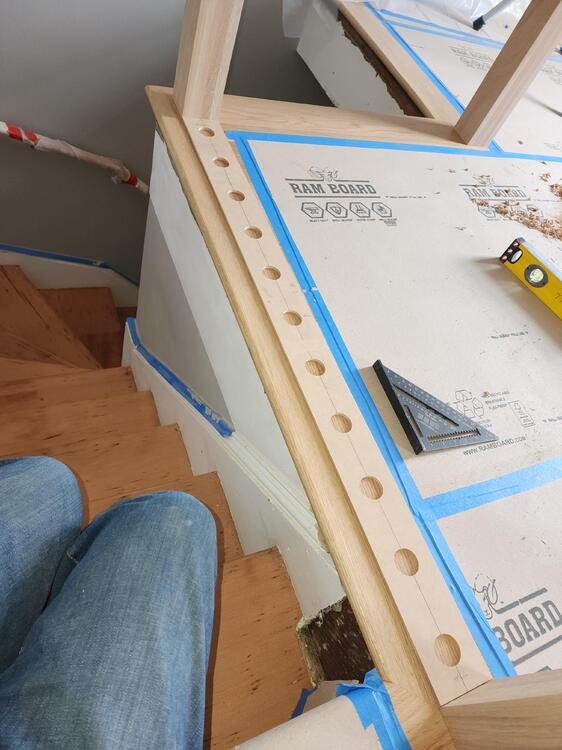
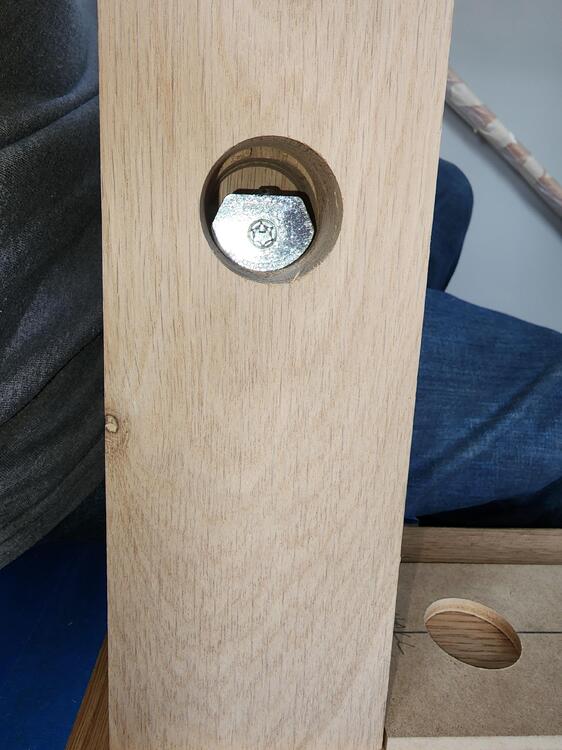






.thumb.jpg.c60d5a381aba858a979f8f187d78b3f5.jpg)
.thumb.jpg.a91a16f2b06d2c2a86194c9cec236a4f.jpg)
